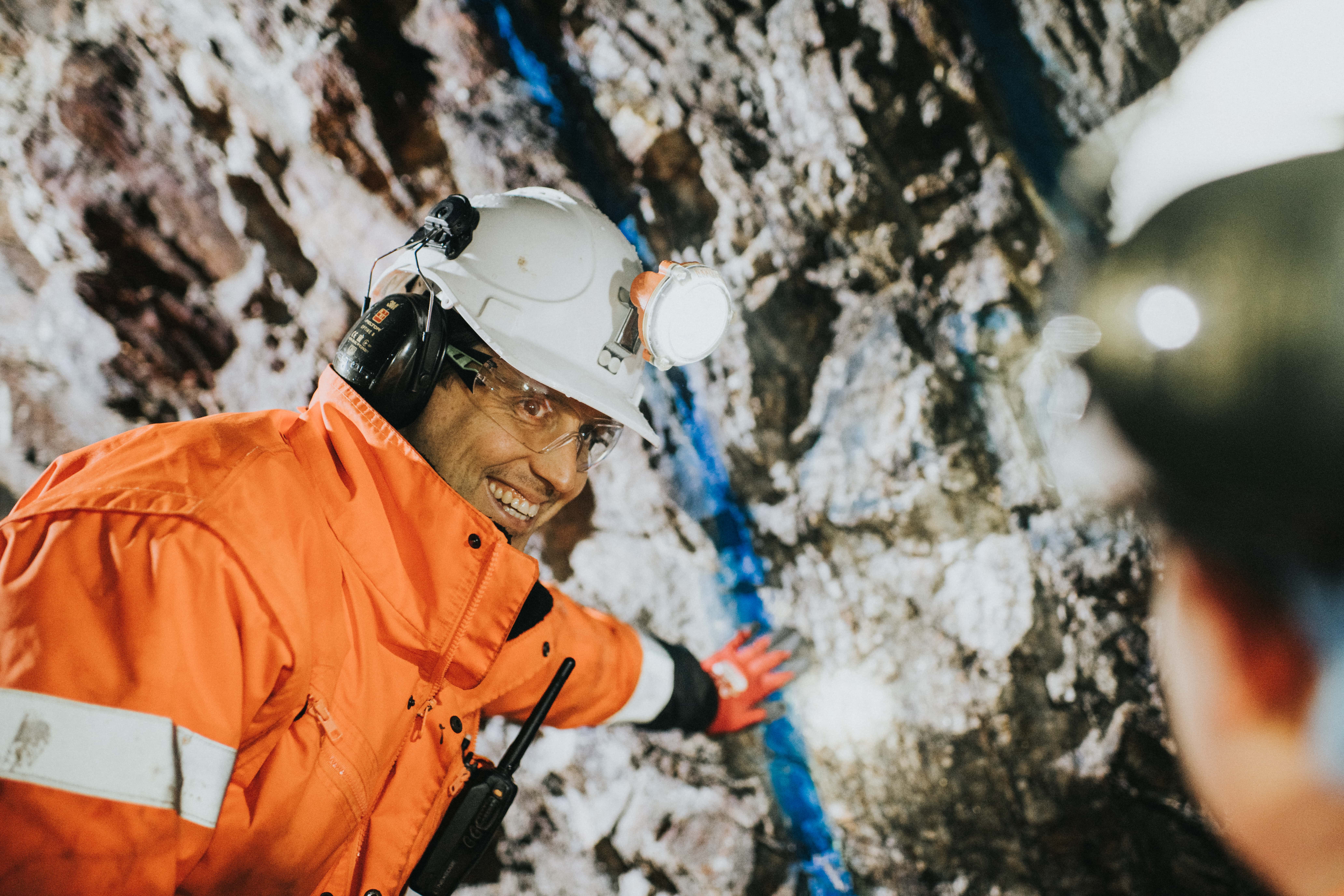
Article
From Rocks to Resources: Gareth Shares His Passion for Geology
Geologists see the world a little differently. Where most of us see rolling hills or rocky ground, they see history written in stone and clues to what lies beneath. Gareth, Dalradian’s Geology and Exploration Manager, has built his career on interpreting those clues. His role combines science, planning and fieldwork — and, as he explains, no two days are ever the same.
Gareth’s love for geology began young. Growing up in Cornwall, he lived near the last operating tin mines and spent countless childhood hours in the local mineral and fossil shop. “I built up quite the collection,” he laughs. “That curiosity carried me all the way to university, where I studied geology and later completed a Masters in Mineral Exploration.”
That decision set him on a career that’s taken him outdoors, underground, and across the world — eventually leading him here, to our Tyrone project.
He also notes how supportive Cornwall Council has been of ventures such as Cornish Metals — an approach he sees as an important example of how local backing can help secure the future supply of critical minerals.
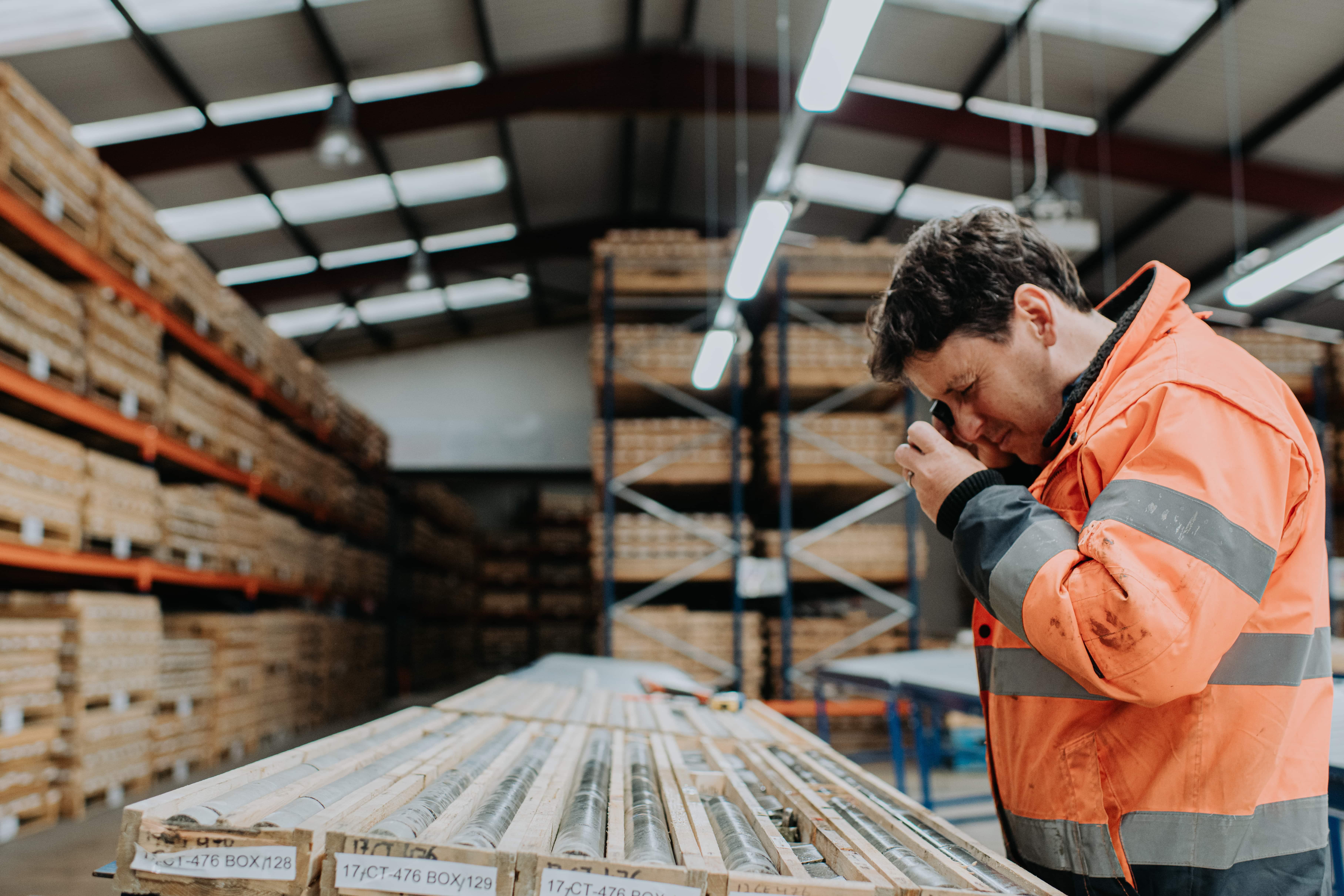
On any given day Gareth might be analysing assay results, reviewing drill core, modelling the deposit in 3D, or planning new exploration programmes. His role also involves liaising with consultants, academics, government departments and local stakeholders. Out in the field, Dalradian’s teams are active across multiple mineral prospecting licences in Northern Ireland, collecting samples and looking for new mineral deposits. Ensuring their work is well supported, safe and compliant with regulations is a key part of Gareth’s responsibilities.
Dalradian’s Curraghinalt project is a high-grade gold deposit, already defined across 21 veins with more still being discovered. But what excites Gareth most is the range of other metals it contains. Alongside gold are silver, copper, tellurium and antimony — several of which are recognised as critical for the global energy transition.
“It’s great to see that silver and copper have now been added to the draft US critical minerals list,” he says. “It reflects their importance in the energy transition, and I hope the UK will follow suit.”
These metals, he adds, can be processed relatively easily, an advantage for the project’s long-term development.
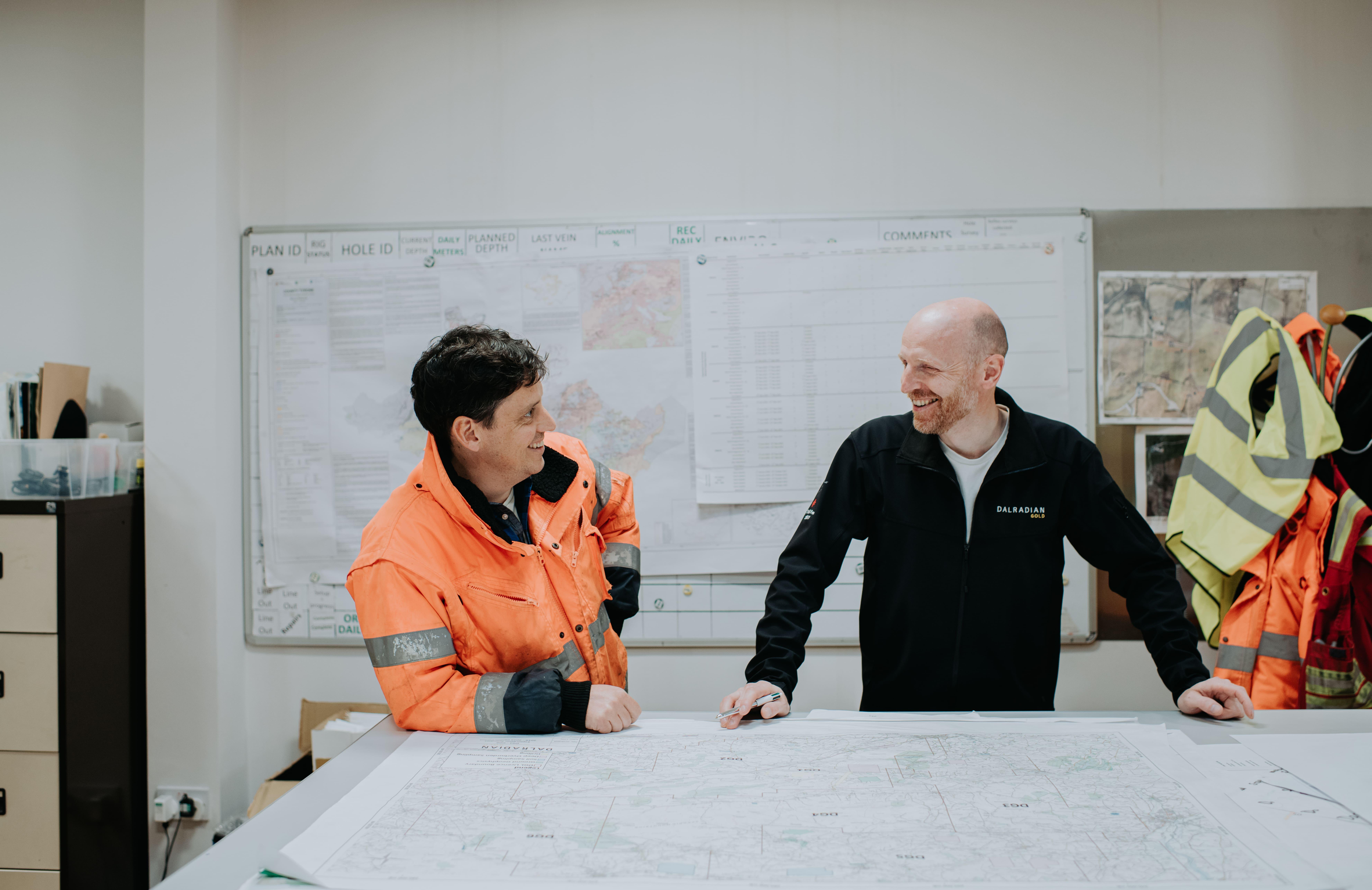
Exploration begins with research: examining existing geological maps, data and records. Fieldwork follows, where geologists study rock outcrops, check stone walls and hedgerows, and collect rock, soil and stream sediment samples. Laboratory analysis of these samples reveals the elements present, highlighting anomalies that may point to mineralisation.
If results are promising, drilling takes place to confirm what lies below. Each new piece of information adds to a growing 3D model of the deposit, gradually building a clearer picture of its scale and potential. It’s important to note that exploration is not mining and does not always lead to mining.
A turning point for exploration in Northern Ireland came with the Tellus Survey, promoted by government in the early 2000s. The geophysical and geochemical data it generated was instrumental in attracting new investment and was a key factor in Dalradian’s decision to acquire the Curraghinalt project in 2009. At that time, the deposit was relatively small. Since then, through sustained exploration investment, the resource has grown nearly ten-fold.
It’s also important to note that exploration is not mining. The work has minimal impact — involving sampling, surveying and small-scale drilling — and it leaves little to no trace on the landscape. Even if exploration identifies a promising deposit, it does not automatically mean a mine will follow. Years of additional technical studies, economic analysis, engineering design and environmental assessment are required before any project could be considered economically and socially viable.
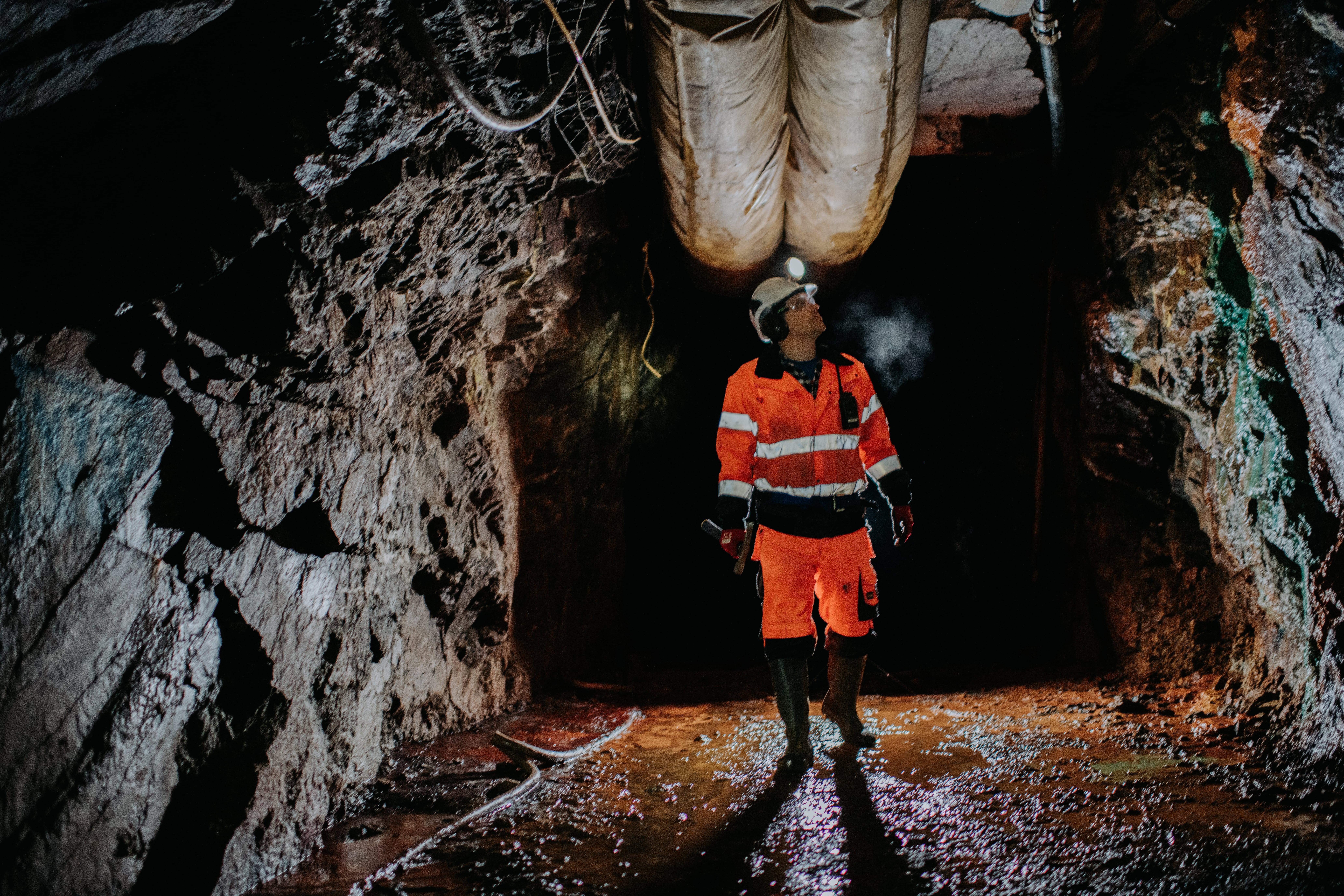
Northern Ireland’s glacial history means much of the rock is hidden beneath layers of till and peat. This lack of exposure poses challenges, but geophysical surveys, deep sampling and drilling allow Gareth and his team to see beyond the surface and continue to expand their knowledge of the region’s geology.
Exploration at Dalradian is guided by a strong sense of responsibility. Landowner permission is always sought before activity takes place, and all exploration work is reviewed for environmental impact in consultation with the Northern Ireland Environment Agency (NIEA). “None of us want to cause harm to the environment,” Gareth explains. “We take that responsibility very seriously and continually look for ways to improve how we work.”
For students or early-career geologists, Gareth’s message is clear: exploration is rewarding, but it requires commitment. “Attention to detail, curiosity, teamwork and a genuine love of the outdoors are essential,” he says. “Don’t be afraid of getting muddy and see as many different rocks as you can — the more you observe, the stronger a geologist you’ll become.”
Every geologist has their essentials when heading out into the field. For Gareth, the list includes a compass, hammer, GPS, map, sample bags, waterproofs (especially in Northern Ireland) and, crucially, lunch. “Forget those last two,” he grins, “and it’ll be a very long day.”
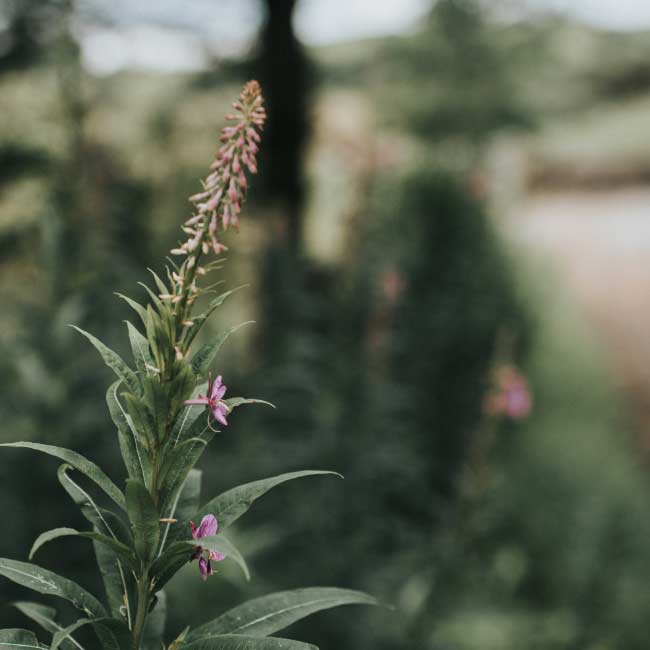
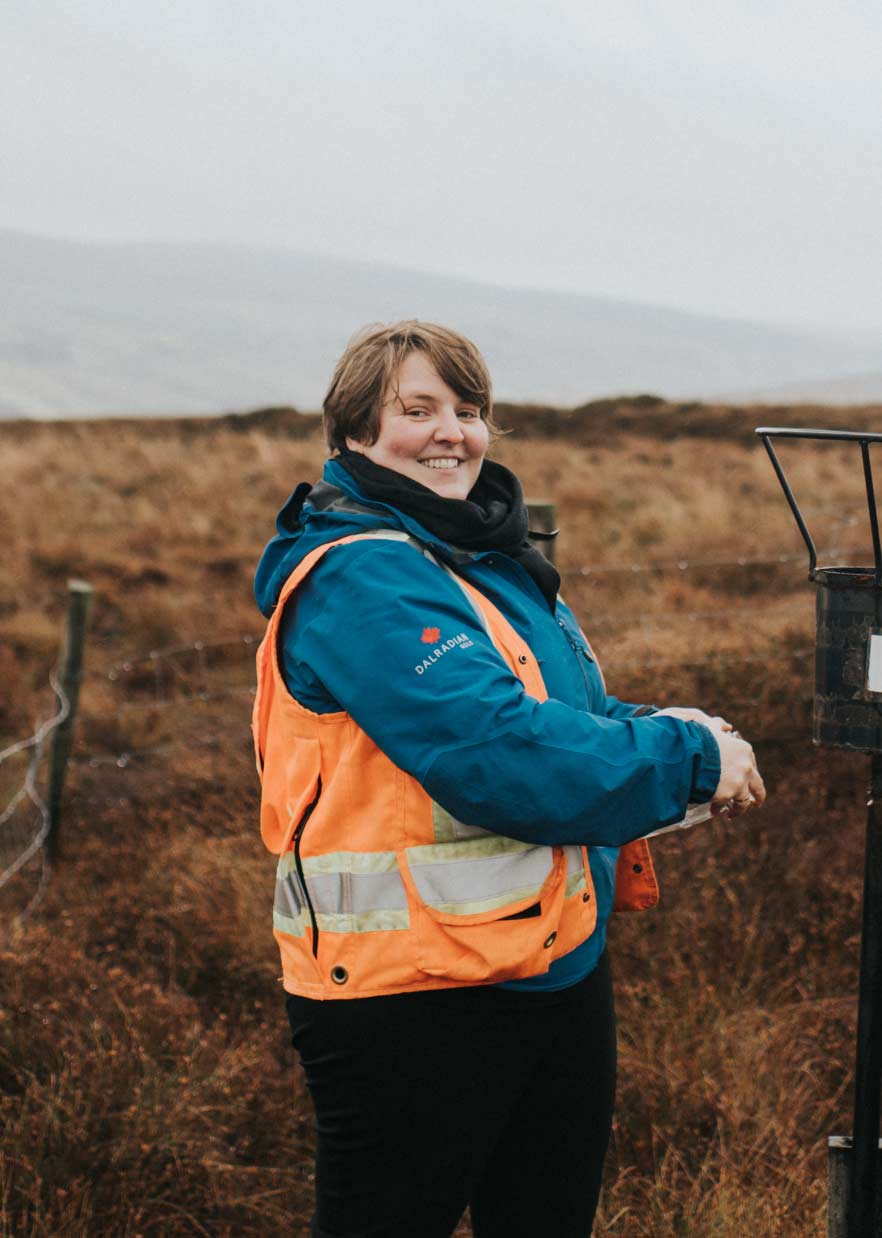
Your support matters
Support our plans to create jobs, strengthen the local community and respect the environment. The Department for Infrastructure will take your views into account. Help make our plans a reality.
Your letter of support will be sent directly to the Department for Infrastructure. Dalradian will not see your letter, nor any of your details.
Great things can happen with your support
Support our plans to create jobs, strengthen the local community and respect the environment. The Department for Infrastructure will take your views into account. Help make our plans a reality.
Customise a letter of support in two simple steps:
Provide your personal details
This will signal your support to the Department for Infrastructure. You can choose to keep these details private.
Tell the Department for Infrastructure why you support the project
Please tick all the elements you like about the proposed project.
Dalradian will not see your letter, nor any of your details. Your letter of support will be sent directly to the Department for Infrastructure
